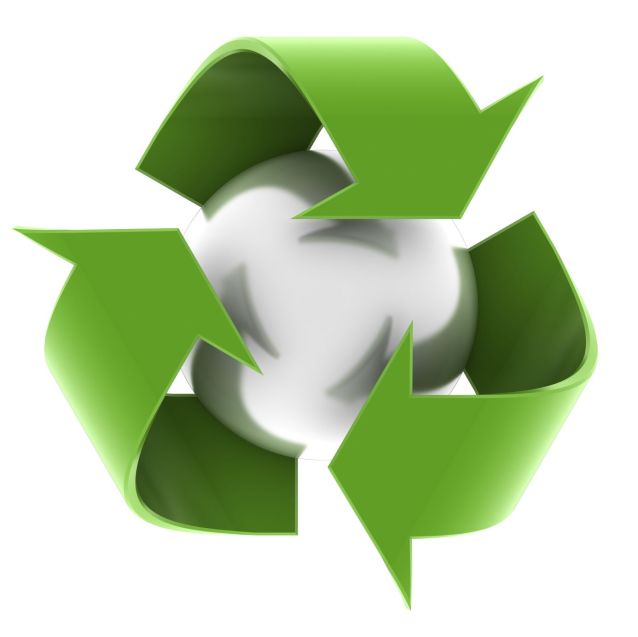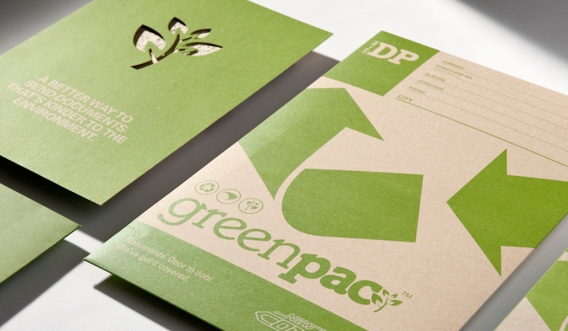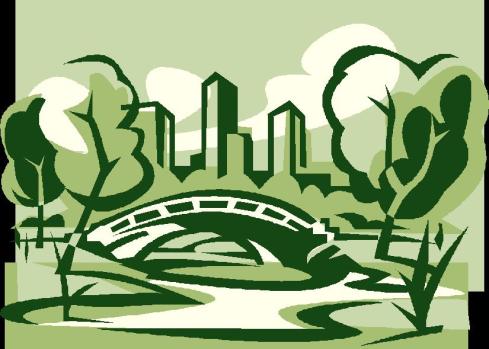THE STATE OF RECYCLING IN FRANKLIN COUNTY, OHIO By Justin Marimon
CCAD – LA261 – Ecology – Spring 2012 – Dr. Kim Landsbergen
WHAT IS RECYCLING?
Did you know that around 60% of the trash you throw away could just as easily be recycled? It is decently appropriate to assume that everyone’s heard of recycling. It’s a simple concept, although it has deep ecological meaning. At its core, “Recycling is processing used materials (waste) into new products to prevent waste of potentially useful materials” (“Wikipedia: Recycling,” 2012). The act of recycling largely reduces the number of products we have to manufacture and in turn is better for the environment which we’re all a part of. Recycling “turns materials that would otherwise become waste into valuable resources” (“Epa: Recycling,” 2012).
HOW DOES RECYCLING RELATE TO ECOLOGY AND WHY IS IT IMPORTANT?
Many people may ask, why is recycling important? How does recycling affect me? The truth is, there are many benefits to recycling everything we can. For one, a hot-topic in this day’s economy, is that “recycling protects and expands US manufacturing jobs and increases US competitiveness” (“Epa: Recycling,” 2012). Another obvious benefit, considering the fact that the world population is growing and running out of space for landfills, is that “recycling reduces the need for landfilling and incineration” (“Epa: Recycling,” 2012). With the growing population, there is only going to be more and more waste, if we don’t start reusing the products we already produce, we’ll run out of resources and run out of space to dump them. Overall, recycling is one of the best ways to help “the environment, saves energy, reduces the amount of waste buried in the landfill and creates and retains local jobs” (“Department of Public,”). It is also worth noting that truly, “anything can be recycled IF there is someone willing to turn the item into something new.” (“Rumpke,” ). As the species that dominates the world, it is up to us to manage its resources. Recycling is just one of those ways we can help.
There is, in fact, a great deal of criticisms with the system of recycling. Many people question whether or not it’s actually better than throwing stuff away. Some people question the usefulness and energy costs of going through the effort to clean and reuse wasted materials. The truth is, in almost all cases, recycling materials uses far less resources than creating something new. For example, “making a ton of paper from recycled materials saves up to 17 trees and uses 50% less water.” (“Department of Public,” ). Research backs up these claims as well. For example, “A study conducted by the Technical University of Denmark found that in 83 percent of cases, recycling is the most efficient method to dispose of household waste” (“Wikipedia: Recycling,” 2012). Sadly, the biggest issue with recycling is that most products are not designed with the concept in mind. It’s true that “much of the difficulty inherent in recycling comes from the fact that most products are not designed with recycling in mind.“ (“Wikipedia: Recycling,” 2012). It is up to consumers to change this course. “As consumers demand more environmentally sound products, manufacturers will continue to meet that demand by producing high-quality recycled products.” (“Epa: Recycling,” 2012).
HOW’S RECYCLING IN FRANKLIN COUNTY, OHIO?
With the basic concept, benefits, and criticisms of recycling covered, it is smart to compare and contrast recycling in your area. In my case, I will examine the recycling system found in Franklin County, Ohio.
Sadly, Franklin County’s history of recycling does not date back all that far. In fact, it was not until very recently that Columbus, Ohio had a city-wide residential recycling program. Although, they have been considering it for a while. Around 1992, “the City of Columbus introduced the Recycling Pilot Program. It consisted of four areas with 1,000 homes in each area” (“Columbus’ recycling program,”). This pilot was much like others around the country and was generally successful. People did use the recycling program, although by nature, the system only works on a very wide scale. A couple years later, “Rumpke had also begun operations in Greenville, Ohio, and Columbus” (“Rumpke,”). These small localized programs continued for a great number of years.
Around 2010, Columbus, Ohio decided to step up and meet the demands of consumers for a more overarching recycling program. The city “has answered residents’ requests for a new, easy recycling service for all city residents living in single-family homes or in buildings with four units or less.” (“Department of Public,” ). A huge program like this, which happened to be paid for using tax-dollars rather than additional spending of consumers, is hard to roll out at once. This being the case, “the new residential recycling service will be introduced to Columbus neighborhoods in five phases over a nine-month period starting spring/summer of 2012” (“Department of Public,” ). Using Rumpke’s infrastructure, by 2013, Columbus will have successfully rolled out a city-wide and residential program. Using the most modern single-stream processes, the program is very simple for consumers and recycling bins will be provided. “Single stream recycling is the process used by Rumpke. It means that residents do not have to sort any of their recyclables. All sorting is done at the material recovery facility” (“Department of Public,” ).
Simply having a program in place is one thing, but what does it cover? What can you recycling, and what is still going to be filling up landfills? In general, you are able to recycle almost any paper, plastic, and glass. Sadly, a few specific items are not included in this list. For example, “yogurt cups and other cups or other containers that DO NOT have a neck, plastic toys, any type of plastic bags, plastic films, and bubble wrap are not accepted for recycling.” (“Swaco: Solid Waste,”). In addition, you will be unable to recycle text books, plastic bags, eating utensils, buckets, light bulbs, mirrors and windows, and even paint cans. Sadly, you will find this is the case with most recycling programs. Even so, most of these items can be dropped off at specialty recycling centers. For example, residents can recycle “plastic bags at their local grocery or drug store, as most have a separate collection point for these inside their buildings” (“Department of Public,”).
Comparison and competition are two devices which cities can use to encourage and improve recycling programs. Looking on a wide scale, recycling is a $160 Billion dollar industry “that employs over 1.5 million people” (“How to go,” 2007). Based on the fact that the city-wide RecyColumbus program will not be complete at least for another year, Franklin County is not doing that well compared to other cities. Sadly, “Columbus [is not even] one of the Top 25 Greenest U.S. Cities” (“Columbus also not,” 2007). Due to the spotty offering of the service within the area, it is estimated that in 2010, Franklin County had a recycling participation rate of around 24%. Comparing to a very wide scale, “in the United States, roughly 32% of all waste was recycled in 2010” (Stockman, 2010). In 201l, with the roll-out of the new program, “there is an estimated 55% participation rate” (“Columbus’ recycling program,”). This vast improvement over the course of one year is a very encouraging fact. Luckily this is true around the country, as “the United States recycling statistics have vastly improved each year since the first United States recycling center opened its doors in 1896.” (Williams).
LOOKING FORWARD
Overall, Franklin County is doing a lot to improve participation of recycling in 2012. This massive growth is a very encouraging statistic and it’s great to see improvement. Sadly, “more than half of what is sent to SWACO’s Franklin County landfill comes from businesses and commercial accounts” (“Swaco: Solid Waste,”) Still, the greatest improvement comes from each individual doing their part. Whether it is recycling in their own home or convincing the company they work for to start a recycling program, one person can make a difference. With the fate of our world seemingly in shambles, we need to do everything we can to reduce the use of our natural resources. Recycling is one of the best ways to conserve our planet – it’s great to see Franklin County has realized that and initiated vast improvement over the coming years.
REFERENCES
Columbus also not one of the top 25 greenest u.s. cities. (2007, June 15). Retrieved from http://activerain.com/blogsview/127262/columbus-also-not-one-of-the-top-25-greenest-u-s-cities
Columbus’ recycling program. (n.d.). Retrieved from http://www.columbusga.org/publicservices2/recycle.htm
Department of Public Service, Columbus, Ohio. (n.d.). Retrieved from http://publicservice.columbus.gov/recycle/
Epa: 2009 solid waste reduction and recycling statistics. (2011, February). Retrieved from http://www.epa.state.oh.us/LinkClick.aspx?fileticket=JkyoDUt4a4k=&tabid=2615
Epa: Recycling. (2012, March 22). Retrieved from Wastes – resource conservation – reduce, reuse, recycle. (2012, March 22). Retrieved from http://www.epa.gov/osw/conserve/rrr/recycle.htm
Franklin county: Recycling center & household waste. (n.d.). Retrieved from http://www.franklincoks.org/recyclingcenter/recyclingcenter_page.htm
How to go green: Recycling. (2007, January 31). Retrieved from http://www.treehugger.com/htgg/how-to-go-green-recycling.html
Rich, M. (n.d.). How many people recycle?. Retrieved from http://www.life123.com/home-garden/green-living/recycling/how-many-people-recycle.shtml
Rumpke. (n.d.). Retrieved from http://www.rumpke.com/
Stockman, S. (2010, March 14). United states recycling statistics. Retrieved from http://www.greenhq.net/recycling/united-states-recycling-statistics/
Swaco: Solid waste authority of central ohio. (n.d.). Retrieved from http://www.swaco.org/
Wikipedia: Recycling. (2012, March 16). Retrieved from http://en.wikipedia.org/wiki/Recycling
Williams, L. (n.d.). United states recycling statistics. Retrieved from http://greenliving.lovetoknow.com/United_States_Recycling_Statistics
IMAGE REFERENCES
Voice Brand Agency [Green Package Design]. (2012). Retrieved April 17, 2012, from: http://www.behance.net/gallery/GREENPAC/3165700
[Recycling logo] Retrieved April 17, 2012, from: http://www.mamashealth.com/environment/
Walker [Recycolumbus Logo]. (2012). Retrieved April 17, 2012, from: http://www.columbusunderground.com/recycolumbus-program-kicks-off-today
Megan Risley [Green City Illustration]. (2011). Retrieved April 17, 2012, from: http://furthertheless.com/2011/01/green-cities/




Fantastic job! I’m planning on sharing your link as an example to the class.
Also – what do you think CCAD people (artists, designers) could do to help boost recycling in Franklin Co.?
Thanks!
I think there are a great number of things artists/designers and people in general can do to help.
– As designers, we can focus efforts and projects on the environmental options of design. For example, if doing a project on packaging, look into using recycled and recyclable materials only. Consider the environmental cost of everything you design, especially if it will be made in bulk.
– As fine artists, we can use art to open the eyes of people around us and raise awareness to the urgency and benefits of recycling.
– As artists, we can work to recycle old supplies or waste such as paper from the projects we do.
There is a lot we can do right here at CCAD too.
– In the dorms, there is always the option of recycling. Make an effort to make sure anything that can be recycled makes it to the recycle bins in the hallways or the recycling dumpsters behind each of the dorms.
– Our cafeteria has a composting program, which is in fact a form of recycling. Rather than directly throwing away the compostable cups, to-go containers, or containers, take them back to the cafeteria trash-cans so they can be submitted for composting. These will keep these out of the land-fills and will help produce useful compost.
– EGAD is hosting a program of art supplies donations and trades – recycling old supplies into the hands of other artists is FAR better than throwing them in the dumpster.